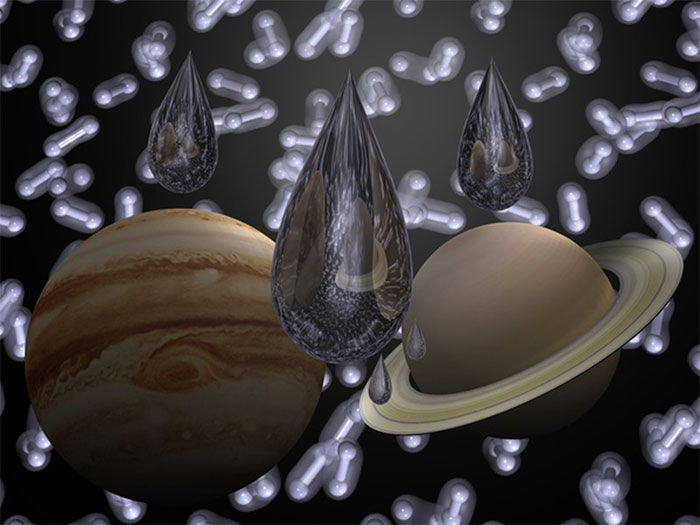Surprise facts about the helium rain on Jupiter
New research shows that helium rain can wash neon from Jupiter's upper atmosphere. Saturn is smaller and colder than Jupiter, and physicists expect that helium rain will be even more common.
A view in Physics by Simon Billinge of Columbia University said that Jupiter is like the Sun mainly hydrogen and helium.

Jupiter is a homogeneous mixture of hydrogen and helium.
And it is even richer than the Sun in six elements, neon accounting for 1/600 the mass of the Solar System, which only accounts for 1/6 of the mass of Jupiter's upper atmosphere.
Astronomers believe that Jupiter is a homogeneous mixture of hydrogen and helium. Some physicists think that neon has somehow sunk out of Jupiter's upper atmosphere.
Astronomers from the University of California Berkeley solved this mystery. Using quantum computer simulations of hot gases deep inside the giant planet, he pointed out that there must be a layer of atmosphere where helium condenses into droplets instead of mixing with hydrogen.
Neon dissolves into these droplets, gradually falling below the planet out of the atmosphere in the form of helium rain . Simulations not only explain a long-standing mystery, but also hint at what might happen inside other planets.
- How was Helium gas generated?
- Discovering diamond rain on Jupiter and Saturn
- Many Helium gas mines were discovered with huge reserves, not worried about exhausting energy
- Scientists have just created a stable helium compound
- Overview of Jupiter
- Discover the world's largest helium mine
- For the first time, humans can discover Jupiter's deepest mystery
- Mysterious giant planet with a helium trail behind
- The Juno probe sends the first image of Jupiter to Earth
- What happens if Jupiter doesn't exist?
- Superheated helium balloons,
- Learn the facts startled to the toilet makes everyone surprised
 'Fine laughs' - Scary and painful torture in ancient times
'Fine laughs' - Scary and painful torture in ancient times The sequence of numbers 142857 of the Egyptian pyramids is known as the strangest number in the world - Why?
The sequence of numbers 142857 of the Egyptian pyramids is known as the strangest number in the world - Why? History of the iron
History of the iron What is alum?
What is alum?